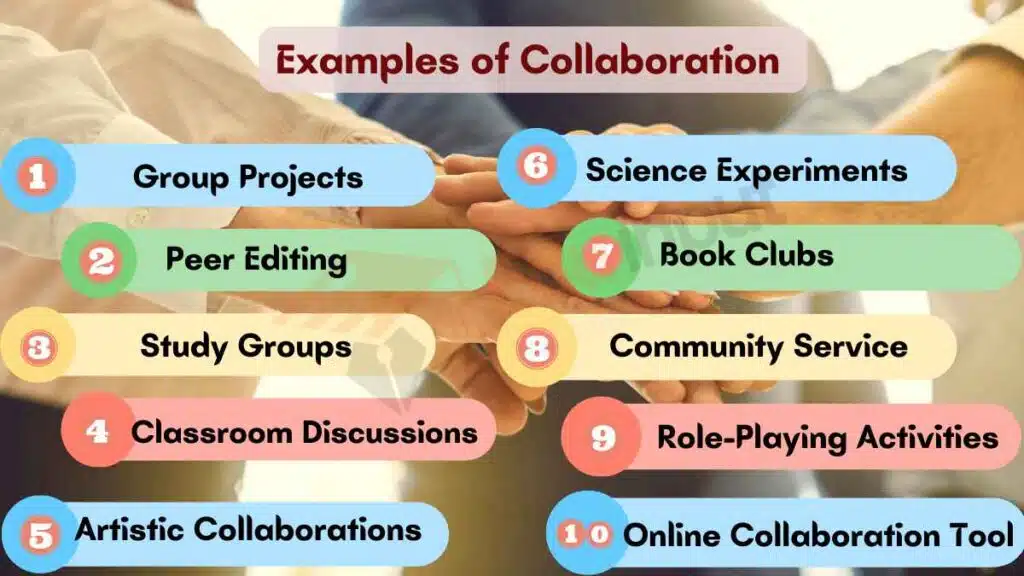10 Examples of Collaboration for Students
Collaboration is an important skill for students to learn, both in and out of the classroom. It allows them to work together with others to achieve common goals, solve problems, and learn from each other.
There are many different ways that students can collaborate, and the best method will vary depending on the task at hand and the students involved.
Here are ten easy and enjoyable examples of collaboration for students.

Examples of Collaboration
1: Group Projects
Assign students to work on projects in small groups. They can research, plan, and create presentations or reports together. This helps them learn how to divide tasks and share responsibilities.
2: Peer Editing
Encourage students to review each other’s essays or assignments. This collaborative approach helps improve writing skills and promotes constructive feedback.
3: Study Groups
Form study groups for subjects where students may struggle individually. They can discuss challenging topics, quiz each other, and reinforce their understanding.
4: Classroom Discussions
Encourage classroom discussions where students can share their ideas and perspectives. This fosters a collaborative learning environment and enhances critical thinking.
5: Artistic Collaborations
In art or music classes, have students work together on creative projects, such as painting a mural or composing a song as a team.
6: Science Experiments
Group students for science experiments or demonstrations. They can collaborate on data collection and analysis, fostering a deeper understanding of scientific concepts.
7: Book Clubs
Start a book club where students read the same book and gather to discuss it. This promotes reading comprehension and encourages thoughtful conversation.
8: Community Service
Organize community service projects, like cleaning up a local park or volunteering at a food bank, to instill a sense of social responsibility and teamwork.
9: Role-Playing Activities
Use role-playing exercises to simulate real-life scenarios. This helps students develop problem-solving skills and empathy through collaborative decision-making.
10: Online Collaboration Tools
Introduce students to digital collaboration tools like Google Docs or Padlet, where they can work on projects simultaneously, even from different locations.
Incorporating these collaborative activities into the classroom not only enhances students’ academic skills but also helps them develop essential life skills such as communication, teamwork, and problem-solving.
Plus, it makes learning more engaging and enjoyable, creating a positive and enriching educational experience.



Leave a Reply